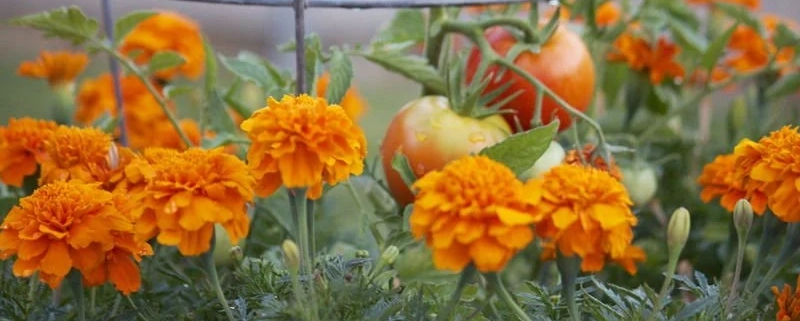Companion Crops – Best & Worst
Companion crops are crops that grow well together. Benefits of planting these different crops close together include pest control, pollination, providing ideal habitat for beneficial insects, maximizing use of space, and to generally increase crop productivity.
Here are some common companion crops or ‘triads’ (groups of three different companion crops):
- Beetroot, Kohlrabi (Knolkhol), Mint (Pudhina)
- Brinjal, Beans, Marigold
- Tomato, Basil (Tulsi), Coriander
- Pumpkin, Beans, Radish
- Cucumber, Radish, Cowpea (Karamani)
As beans helps introduce nitrogen into the soil, they are beneficial companions for most other crops.
Flowers, especially marigold, are a beautiful addition to your vegetable garden and serve to attract pollinators and repel pests. Many herbs like Basil/Tulsi also serve the same purpose and make great companions for a variety of crops. You can plant flowers and herbs as borders around vegetable plots.
While many crops are beneficial to plant together, some crops make bad companions. Keep in mind not to plant crops that require the same nutrients close together, or whose root systems grow to the same depth, as they will compete with each other and will fail to thrive. While legumes (beans, peas) are great at enriching soil and make good companions for most vegetables, they don’t do well near Allium family members (onions, garlic, chives) as these crops kill the beneficial bacteria that produce nitrogen on the roots of legumes.
Search for Companion Crops
REFERENCES
Personal Conversation with Mr. Alladi Mahadevan, The Organic Farm
https://archive.org/details/companionplantin0000mccl
https://www.gardeningknowhow.com/edible/vegetables/beans/bean-plant-companions.htm
https://en.wikipedia.org/wiki/List_of_companion_plants
https://www.thespruce.com/companion-planting-with-chart-5025124

